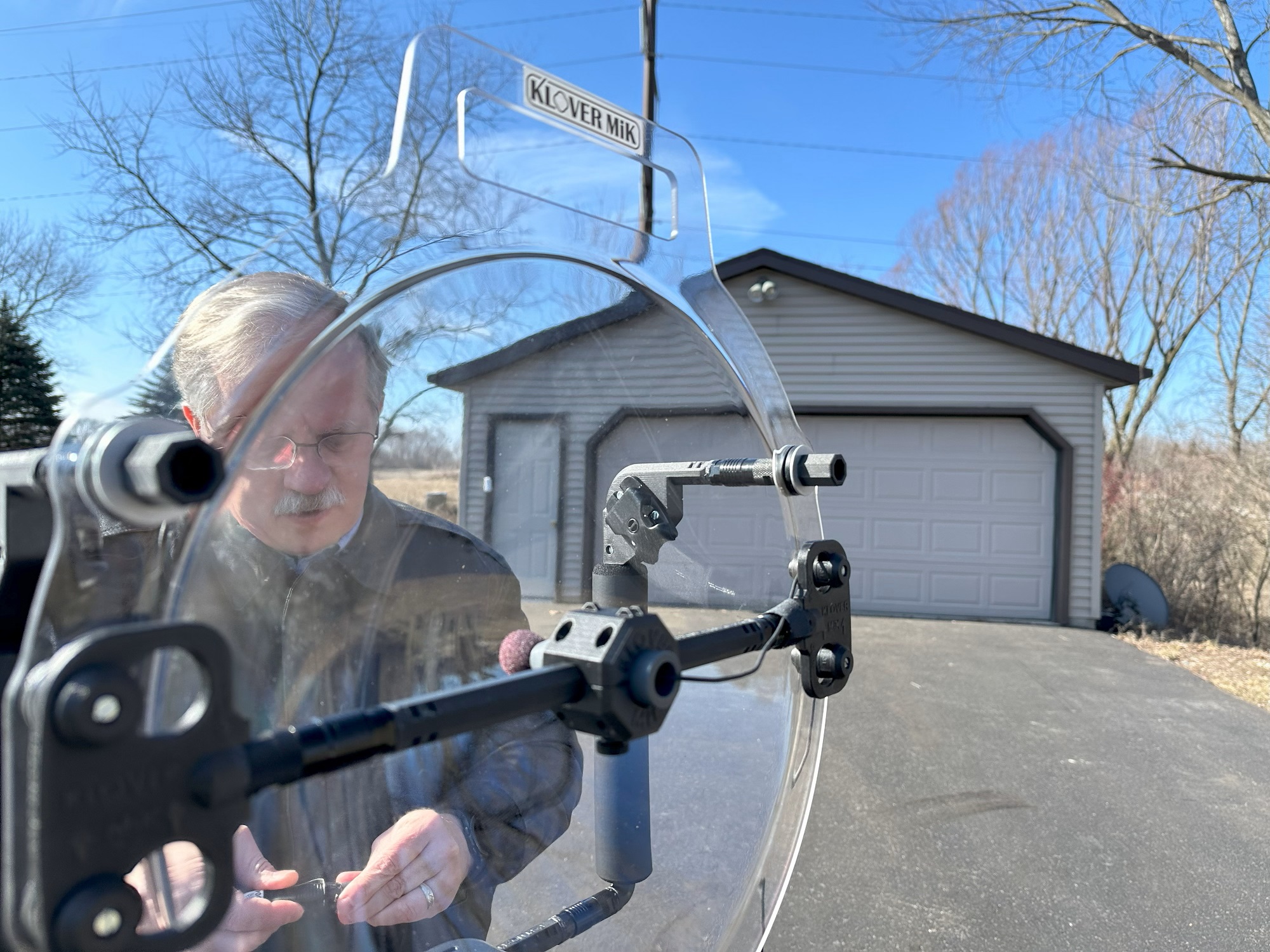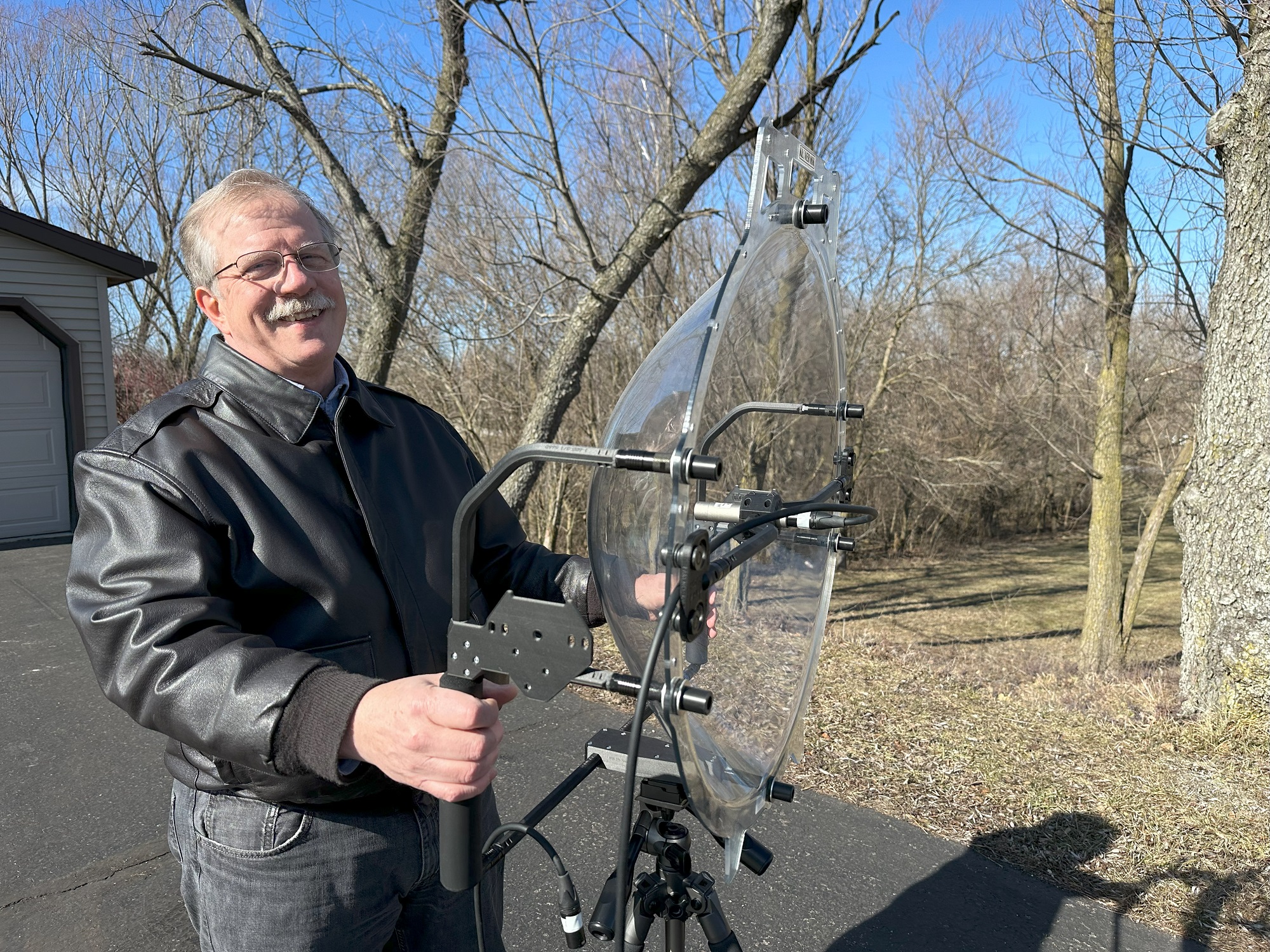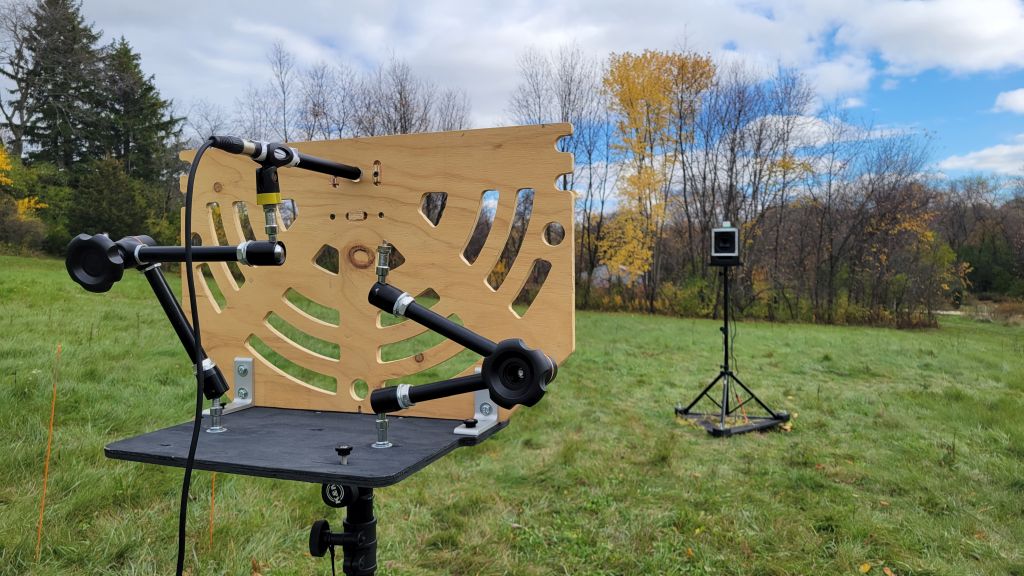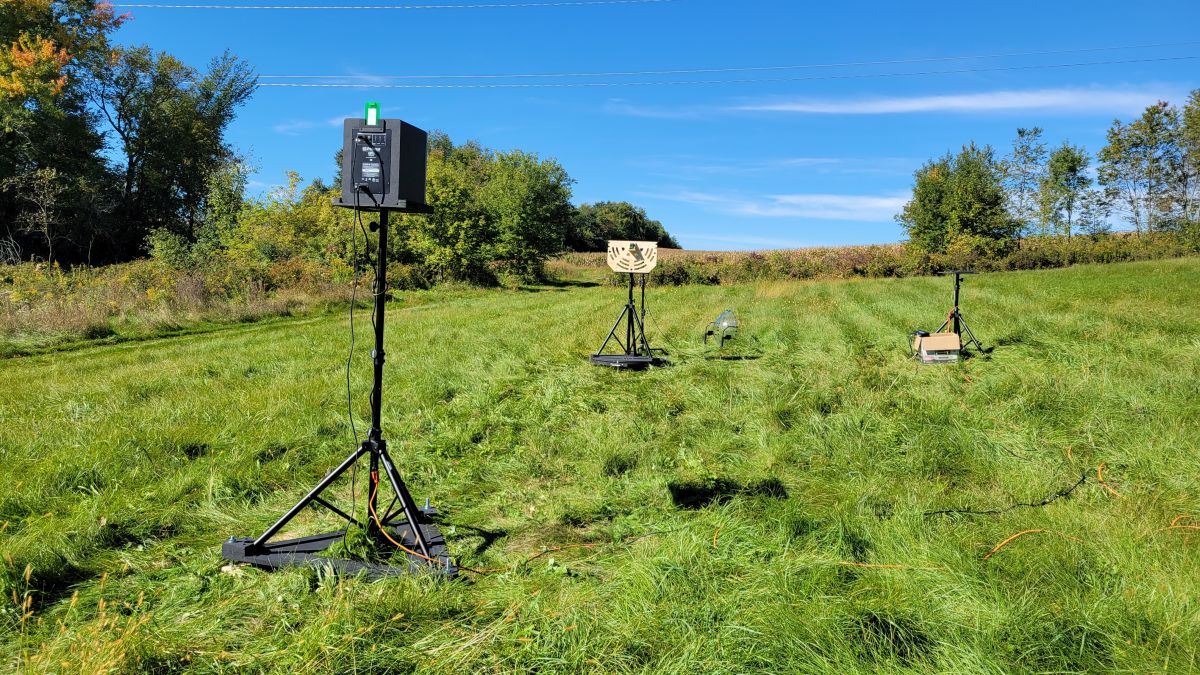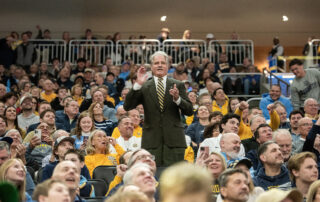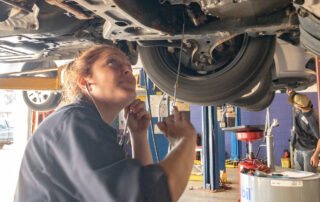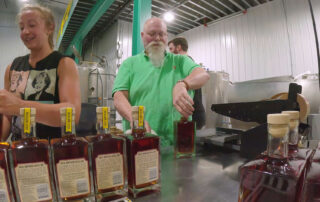Waves are everywhere: they make up light, color and heat. In a very literal sense, waves connect us all. And there are so many ways these waves can change before ultimately being interpreted as part of someone’s experience.
WPR’s Avery Lea Rogers is obsessed with how these waves turn into sound. When they visited specialized microphone maker Klover Products in Janesville, Rogers found that these high-tech microphones connect Wisconsin to the world.
==
Next time you see what looks like a “giant Tupperware bowl” on the sidelines at Lambeau Field, chances are it came from Paul Terpstra’s basement in Janesville, Wisconsin.
Terpstra and his wife, Diane Terpstra, own and operate Klover Products from their home. Klover makes and sells parabolic microphones, which can pick up sounds from very far away.
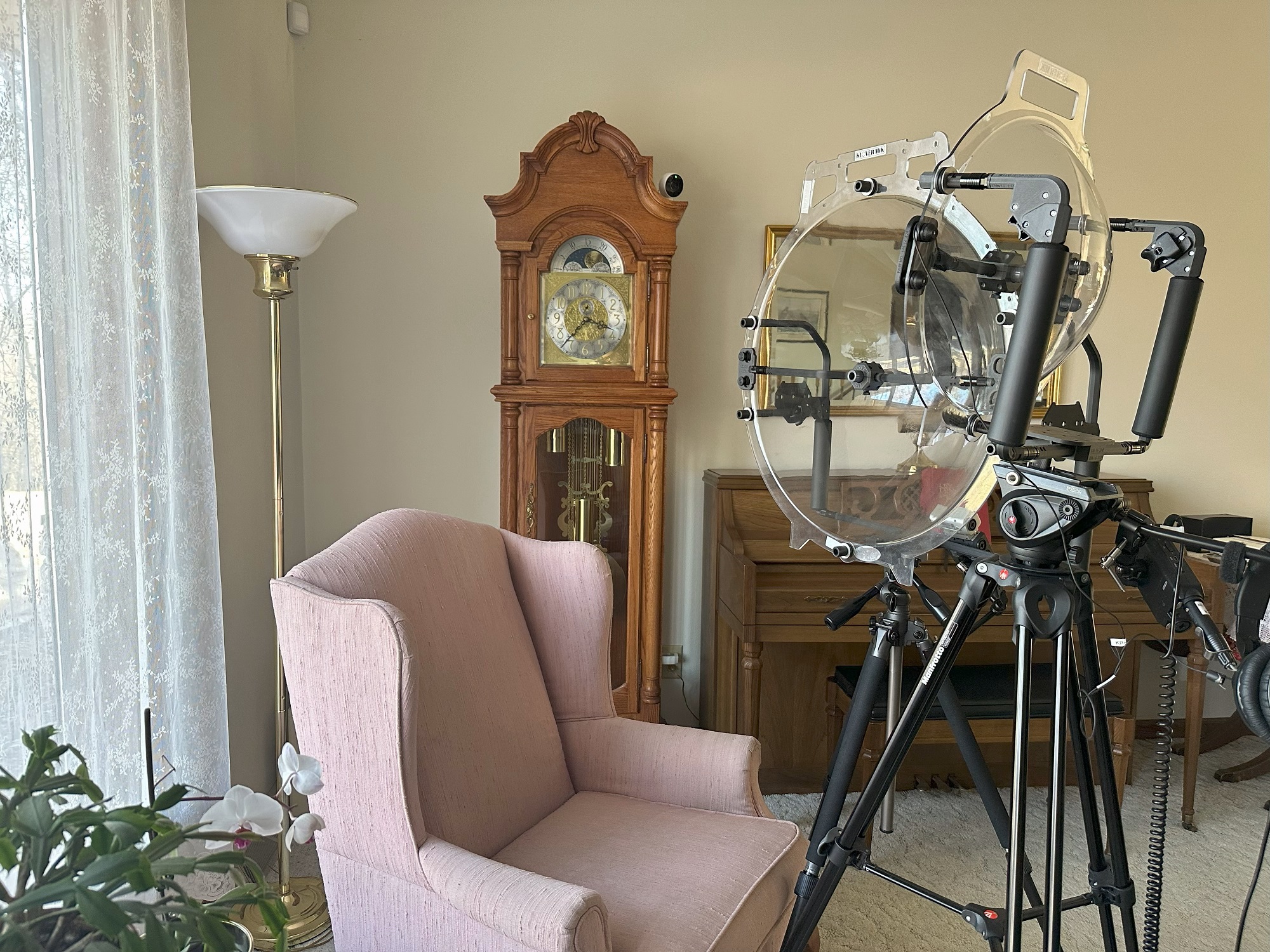
Paul and Diane Terpstra’s home is also the headquarters of their business, Klover Products. In their living room sits a grandfather clock, upright piano, and two tall tripods with parabolic microphones secured to them. Part of the microphone looks like a large, upright acrylic dish. (Avery Lea Rogers/WPR)
“A microphone is like your eardrum. A parabolic (dish) is like your ear,” Terpstra said. “When you’re outside and you cup your hand around your ear, you are in essence creating a sort of quasi parabolic microphone, because you’re capturing the sound energy from a larger area and forcing it into your ear.”
Parabolic microphones are most often used in professional sports, like football.
“A good example is whenever they kick the ball. If you hear that foot hit the ball, that is captured through a parabolic,” Terpstra said. “I call Lambeau Field my R&D lab.”
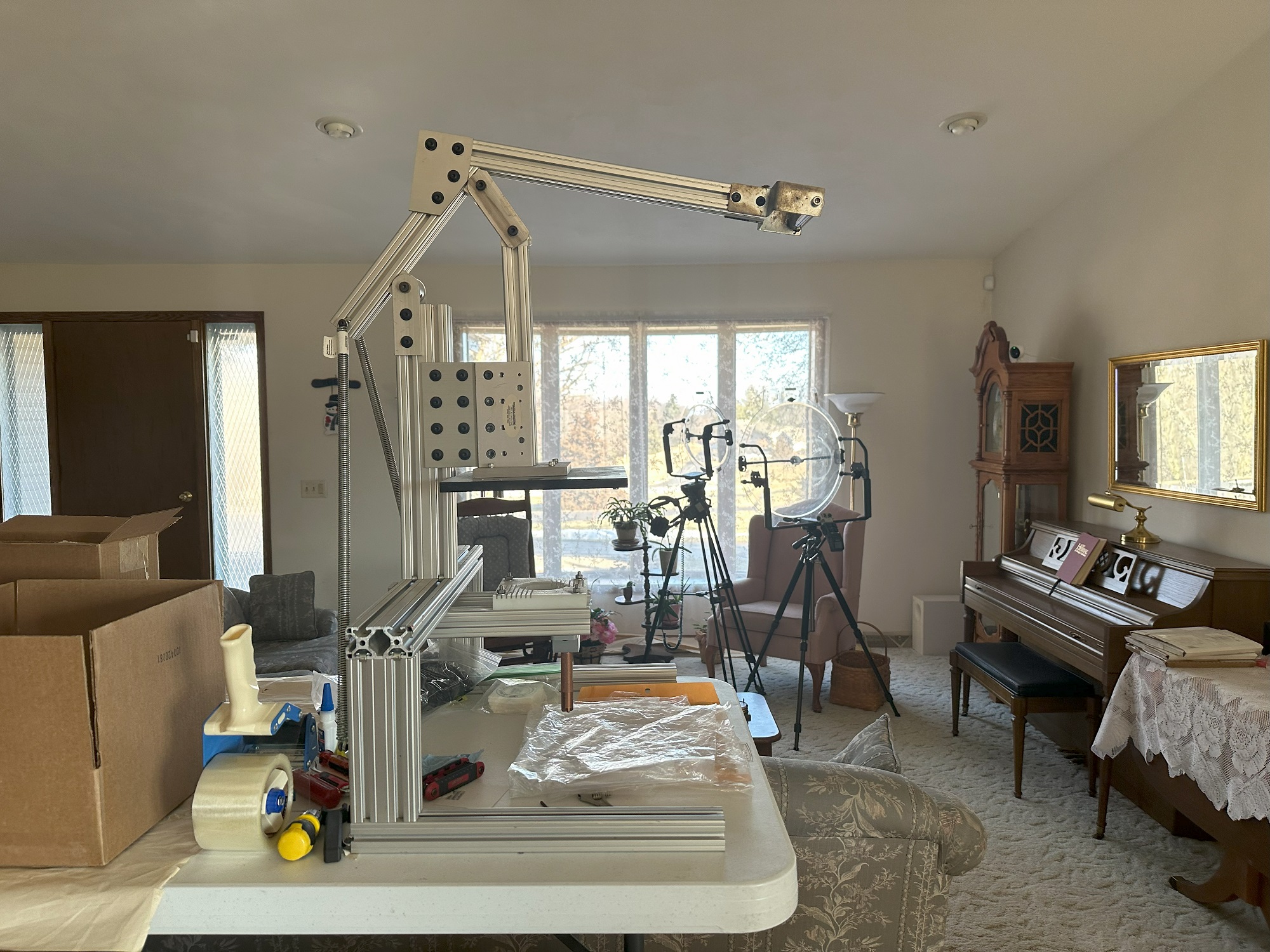
Klover Products is based out of Paul and Diane Terpstra’s house. Everything they sell is manufactured in his basement or his dining room. (Avery Lea Rogers/WPR)
With the way the business works, Terpstra doesn’t always know where his microphones will end up. His mics have been used in six Super Bowls, the most recent FIFA World Cup, and every Olympic games since Rio in 2016.
The Terpstras started an engineering company 20 years ago, which turned into Klover Products almost by accident. In 2011, one of their customers was approached by Fox Sports looking for a vendor for parabolic microphones.
“My customer comes to me and says, ‘What do you know about parabolic microphones?’ And I said, ‘Absolutely nothing. But I’ll figure it out.’” Terpstra said.
He then developed a prototype and sent it to Fox where it was tested by their audio engineers. Fox ordered 50 of them for the next football season.
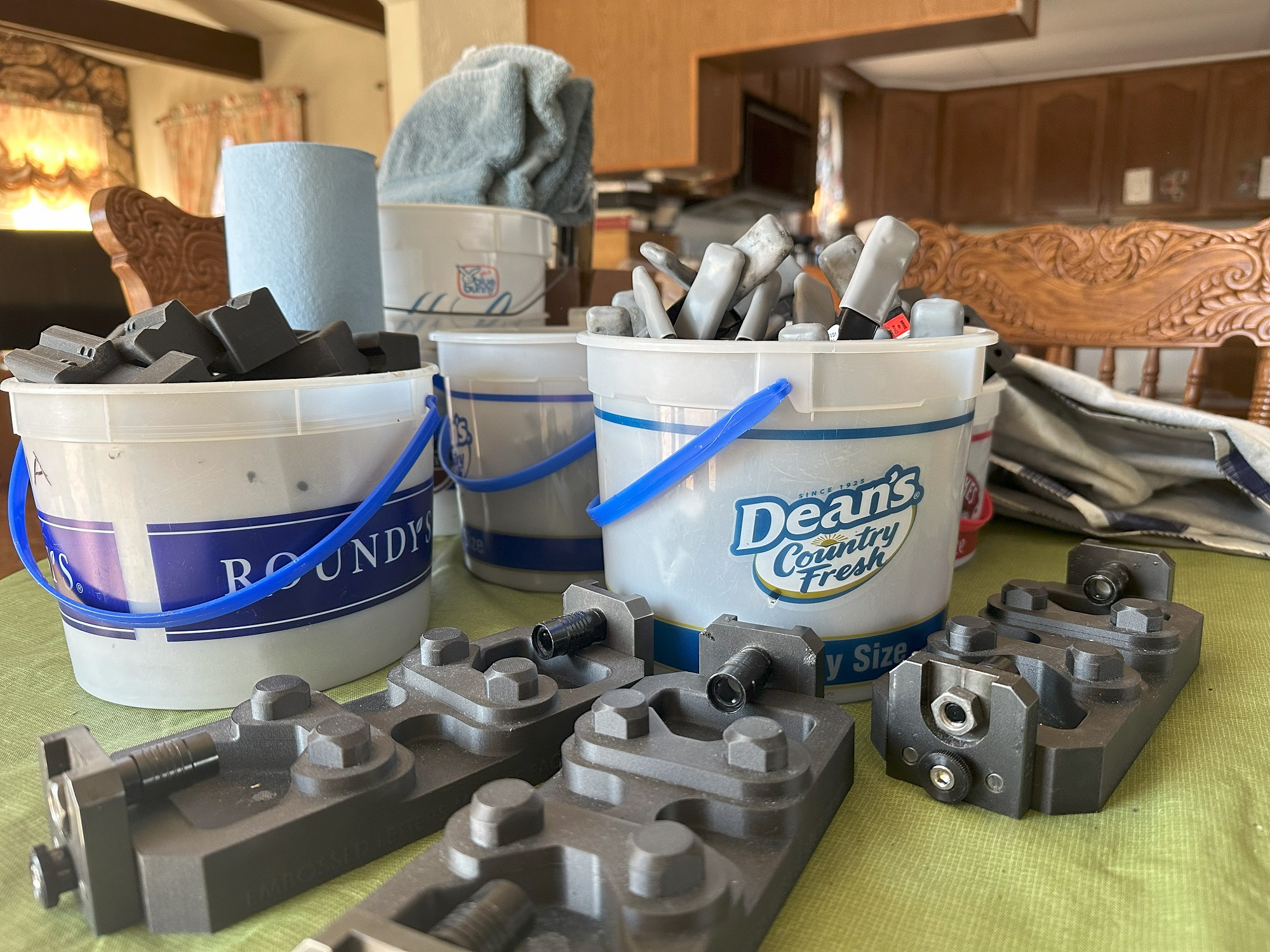
Instead of place settings and cutlery upon the dining table, there sits a small assembly line equipped with large and small tools, buckets containing uniform, oblong hunks of 3D-printed plastic parts, and several contraptions each in a different point of assembly. (Avery Lea Rogers/WPR)
As a seasoned mechanical engineer, Terpstra produced research about his parabolic microphones in order to bolster the business. Some of the research, he says, challenges some ideas about what a parabolic microphone needs in order to function.
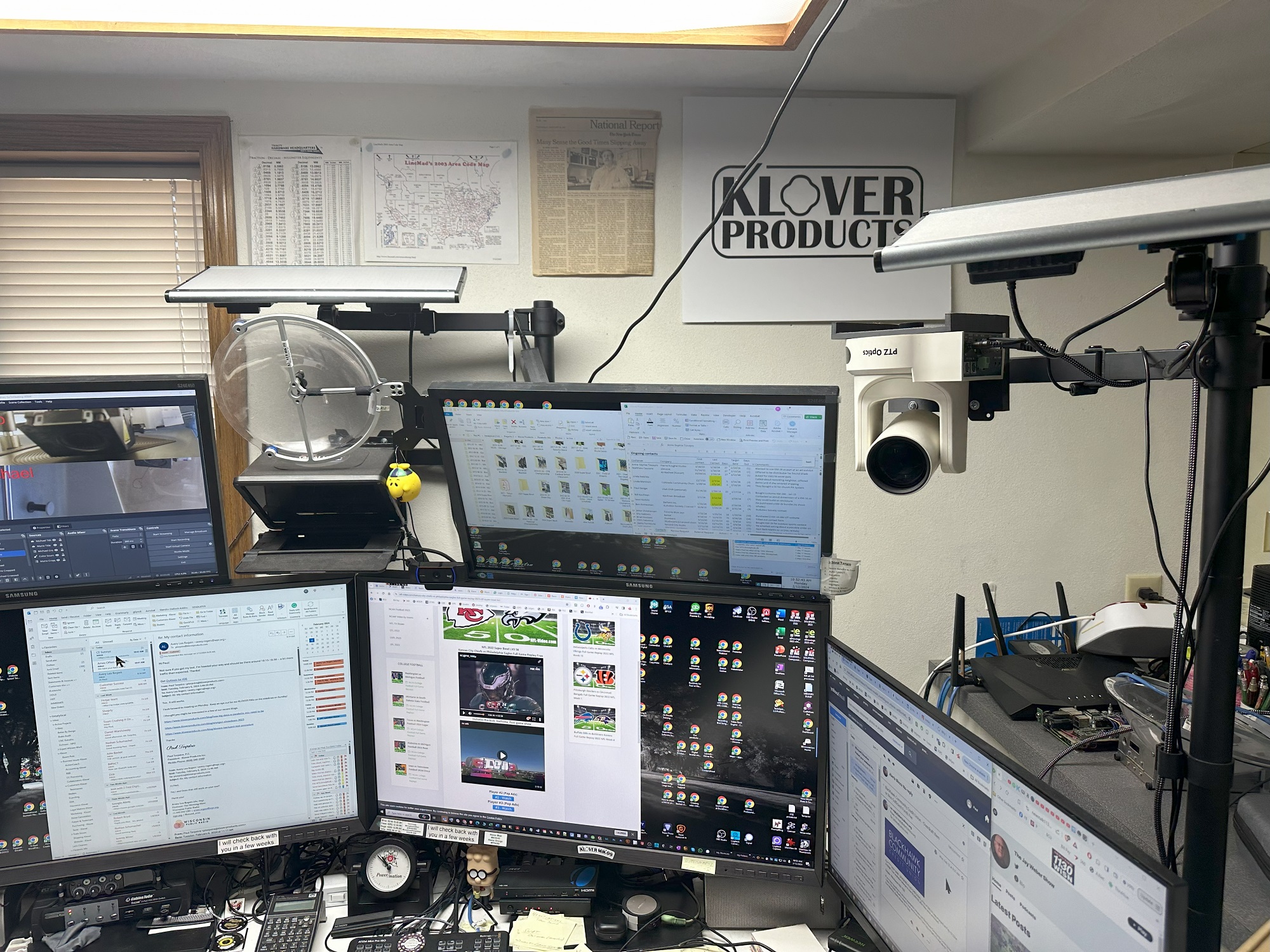
Terpstra’s office is in the basement, which is completely decked out in machines, computers, a greenscreen recording space, prototypes, and two 3D printers named Michael and Mario. (Avery Lea Rogers/WPR)
“All the experts will say (a parabolic dish) needs to be 24 inches or 30 inches in order to capture the human voice. And I guess I was just too dumb to know better, so we built a nine inch (dish), and it works very, very well,” Terpstra said. “Every once in a while I’ll get into an interesting discussion online with somebody that’s just convinced that a nine inch parabolic (dish) will never ever work.”
Although Terpstra said he is “not an audio engineer by any means,” he said he’s always been interested in sound and music.
“Our brain does so many things with the sound that we hear that you don’t even think about or understand (it),” Terpstra said. “And that’s where all the fun things of audio come into it.”
